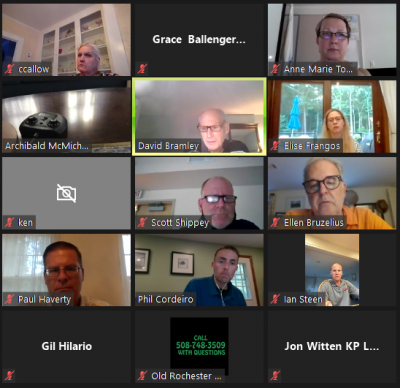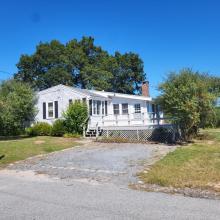Marion Zoning Board brings up septic, aesthetic concerns on development
MARION — A proposed 96-unit housing development would significantly add to Marion’s available and affordable housing, but that’s only if major sewer concerns and smaller aesthetic complaints don’t hinder the project.
Those were the primary problems the Zoning Board of Appeals brought up with the Heron Cove Estates housing development, planned for 78 Wareham Road.
Speaking at a July 23 meeting on behalf of developer Ken Steen, Phil Cordeiro from Allen & Major Associates said that the development’s planners addressed many of the comments on the design since the last hearing in March. Steen also designed Marion Village Estates and Sippican Woods.
The parcel at 78 Wareham Road was formerly the proposed site for a solar array, with the developer for that project ZPT Energy Solutions, taking the Planning Board to Land Court when it refused to grant a permit for the work. The owner for the land, Henry DeJesus, then decided to sell it to Steen and change plans for the parcel.
What the two have proposed now is a campus-style development built around a circular road. The development will have 84 two-bedroom and 12-three bedroom units in townhouses and triplex-style buildings, a swimming pool, dog park, and playground for kids.
Of those units, a quarter would be affordable. Selectmen approved the project in July 2019.
One hurdle remains: determining whether the project will be able to connect to town sewer.
There, Cordeiro and Steen are waiting on the results of a study by the town. The current system is almost at capacity, Marion officials say, so the study will determine whether there is enough capability for 96 more units. If the development is approved to join the town’s sewer system it would need to negotiate the cost for that with the Sewer Commissioners.
Board member Cynthia Callow asked whether the developer had a backup plan if the development is unable to join the town sewer system.
Cordeiro explained that the backup option would be a Title 5 septic system, which would severely limit the size of the project due to multiple requirements.
“If we didn't get the connection, we would have to look at ‘how do we make this work?’” Cordeiro said.
Marion Health Agent David Flaherty said that if the 96-unit development cannot join the sewer system it would have to start all over in its waste planning and would likely have to give up some lots to install a small treatment plant that would just service the buildings in the unit.
He said the worst case scenario would be individual septic systems, but that would be “cost ineffective.”
After her question, Callow said “I’m okay with [the development joining the sewer system], I hope we do get the sewer connection, as I would hate to see septic so close to the river.”
Newly-appointed board chair Christina Frangos asked for a sample lease agreement, which Steen said he would send.
She also brought up that in preliminary renderings of the development, “did not look like coastal New England. It looks like anywhere in America.”
Frangos said in bringing the point up in March. “I was hoping you would look at other buildings in town.”
Steen said he had not thought her initial request specific enough, but he will try to get the board a reconsidered design within a couple of weeks.
Board member Will Tifft asked if the board had gotten examples of other Steen Realty developments to get a sense for their general feel.
However Callow chimed in and said that in working with Steen in the past as part of the conservation commission she was always impressed by the company’s professionalism, which seemed to satisfy Tifft.
Board member David Bramley asked if Steen felt there was enough demand in the area for rental housing.
Steen responded that there is “significant demand anywhere in area.”
Marion currently has 8.04% affordable housing, Mattapoisett has 2.59% affordable housing and Rochester has 0.43% affordable housing, according to the Southeastern Regional Planning and Economic Development District.
The percentages are important for reasons beyond the area’s need for affordable housing.
Under the state’s 40B statute, designed to promote the construction of affordable housing, developers seeking to build in towns with numbers below the 10% threshold are allowed to skirt local zoning and conservation bylaws if a percentage of the homes they build are defined as affordable.
Bramley also said he noted more police activity at the Marion Village Estates, and wanted to know if the Police Chief had weighed in on the new development.
Marion Building Commissioner Scott Shippey said he had.
Steen and Cordeiro said after the project is approved that it will take 12 to 19 months to build. They expect to see the first occupants move in 9 months after construction, and the last ones 20 months after that same date.
The hearing was continued to Sept. 10 to hear the results of the town sewer survey.












